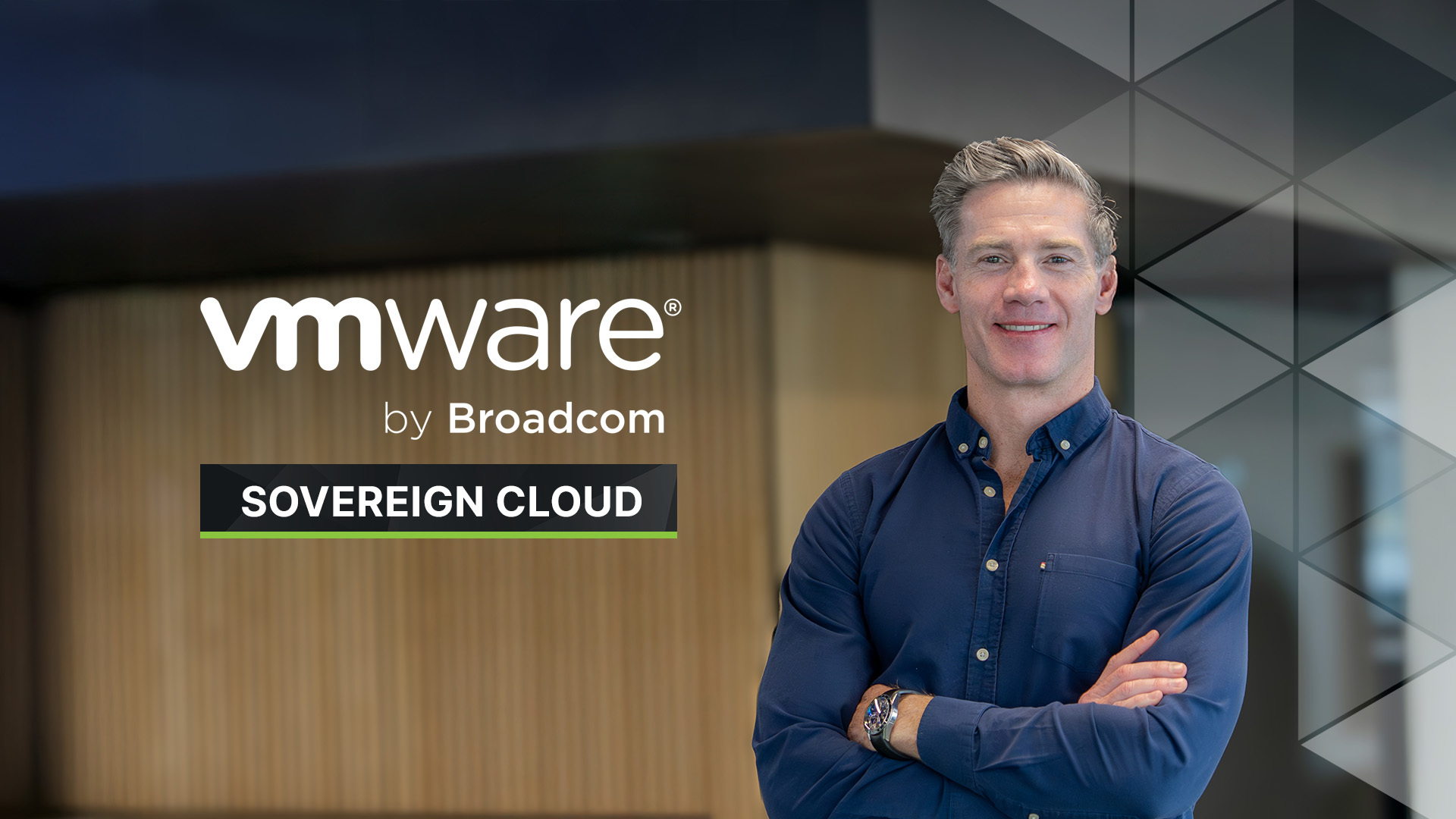What is a hypervisor?
A hypervisor is software that sits and operates on top of the physical hardware. It virtualises and manages components like CPU processing power, RAM, and storage. Also known as a virtual machine monitor (VMM), a hypervisor creates and allocates virtual machines (VMs) that can handle individual tasks and functions all while sharing the same physical resources.
To learn more about virtual machines check out our blog on virtual machines and vCPUs.
How Does a Hypervisor Work?

What does a hypervisor do?
A hypervisor enables virtualisation, creating multiple VMs from one physical server. This greatly extends the capability of the server, maximising its resources. Hypervisors are used in cloud computing to create a network of virtual servers pulling their resources from an underlying structure of physical servers.
Hypervisors allow for multi-tenant cloud solutions, such as our Managed Enterprise Cloud, where a server can be shared between multiple users and organisations. Multiple VMs can be created and allocated to users from the same physical server, while remaining isolated. This gives each user the benefits of their own powerful and secure platform, without needing their own dedicated physical resources. If different users require different configurations, this can be managed as the VMs function independently. For users with smaller resource requirements, this can bring significant cost savings, as they do not need to pay for an entire physical server.
For organisations using single-tenant Private Cloud or Dedicated Server cloud solutions with physical resources dedicated to a single user, hypervisors are still used to create VMs, but these are all allocated to the one user. This allows the user to maximise their resources, increasing capacity without needing additional physical servers.
To learn more about how cloud hosting works check out our cloud hosting blog.
Why should you use a hypervisor?
Without the virtualisation that hypervisors enable, hosting architecture would require a much greater number of physical servers, each of which would need space and maintenance, and would need to be managed individually. Virtualisation is a significantly more efficient use of space and resources, with the added benefit that VMs can be managed from a central management console.
Hypervisors allow for scalability, where resources can be increased and decreased as demand and growth requires. Additional VMs can be allocated to the user quickly and easily. This could be planned scaling, for example increasing resources in advance of a sale period for an eCommerce business, or reactive scaling, where resources can be added in the case of an unexpected rise in traffic. If the increased resources are no longer needed, the platform can be scaled back down. This allows organisations to only pay for the resources they need, when they need them, as opposed to having expensive resources that are unused for periods of time.
Virtualisation using hypervisors additionally brings cost savings by maximising the resources per physical server, meaning you are utilising less physical hardware for the same performance.
What are the different types of hypervisor?
There are two types of hypervisor. Type 1, also known as a bare metal hypervisor, sits directly on top of the hardware and is the faster of the two options. Type 2, also known as a hosted hypervisor, is generally smaller and sits on top of the host’s Operation System (OS), passing hardware requests to the CPU and RAM through the OS. The difference in the way the hypervisors are installed gives each its own distinct features and benefits.
Type 1 and Type 2 benefits and use cases
Type 1
A type 1 hypervisor runs directly on top of the hardware, without needing a separate operating system. This minimises latency and maximises the performance of hardware resources, meaning it is generally faster and more efficient. The use of hardware resources is also scalable, meaning the virtual infrastructure can utilise additional resources as workloads grow.
Type 1 hypervisors are designed to support a wide range of hardware platforms. As such they are highly flexible and can be used for cloud infrastructure, on-premise infrastructure, and edge computing environments.
The use cases for type 1 hypervisors are wide reaching. For enterprise-grade infrastructure, a type 1 hypervisor will almost always be required due to their superior performance capabilities.
Type 2
Type 2 hypervisors run as a regular application, on top of an existing operating system. For home users or developers, this can be beneficial, as they work within the existing environment, and are relatively simple to manage.
Type 2 hypervisors are cheap to run, and do not require dedicated hardware – a type 2 hypervisor could, for example, be run on a desktop or laptop computer. Their use cases may include running test environments, or in educational settings to experiment with different virtualised environments or operating systems. Type 2 hypervisors will not generally be suitable for enterprise-grade infrastructure.
Hypervisor options
VMware ESXi
Type
ESXi is a proprietary type-1 hypervisor developed by VMware.
Architecture
It runs directly on the bare metal hardware without an underlying operating system. This design minimises overheads and maximises performance.
Features
ESXi provides features like VMotion (live migration), High Availability (HA), Distributed Resource Scheduler (DRS), and Fault Tolerance (FT). VMware vSphere offers various storage options, including vSAN (Software-Defined Storage) and external options such as SAN and NAS support. VMware is the industry leader for hypervisor software, and ESXi is widely used in enterprise environments for virtualising servers, desktops, and applications. VMware powers our Enterprise and Private Cloud solutions at Hyve. To find out more, visit our VMware hosting page.
Management
ESXi hosts are managed centrally using VMware vCenter Server.
Nutanix AHV
Type
AHV is a type-1 hypervisor developed by Nutanix.
Architecture
It is based on the open-source KVM (Kernel-based Virtual Machine) technology.
Integrated HCI
Nutanix AHV is tightly integrated with Nutanix hyperconverged infrastructure (HCI). It combines compute and storage resources in a single platform.
Features
AHV supports live migration, snapshots, and high availability. Nutanix AHV is commonly used in Nutanix HCI deployments.
Proxmox VE
Type
Proxmox Virtual Environment (VE) is an open-source type-1 hypervisor.
Architecture
Proxmox VE is based on Debian Linux and uses KVM for virtualization.
Features
Proxmox VE supports live migration, backups, and containers (LXC). Proxmox VE is popular for small to medium-sized virtualization deployments.
Management
It allows multiple hosts to be added to logical structures (data centres) and connected as nodes in clusters.
KVM (Kernel-based Virtual Machine)
Type
KVM is an open-source type-1 hypervisor.
Architecture
It is part of the Linux kernel and leverages hardware virtualisation extensions (Intel VT-x, AMD-V).
Features
KVM provides robust virtualisation capabilities and is commonly used in Linux environments. KVM is suitable for various workloads, including servers, development, and testing.
Management
KVM can be managed using tools like libvirt and virt-manager.
QEMU (Quick Emulator)
Type
QEMU is an open-source emulator that can also function as a type-2 hypervisor.
Architecture
QEMU emulates hardware and can run virtual machines. It’s often used in conjunction with KVM for better performance.
Features
QEMU supports various guest operating systems and hardware architectures. QEMU is versatile and can be used for development, testing, and running legacy systems.
Microsoft Azure and AWS
Hyperscaler cloud providers AWS and Microsoft Azure both use their own custom hypervisor solutions on their platforms. While this can make the hypervisors accessible to organisations already using those technologies,this means they are not compatible with other hardware and environments. Software that is exclusively compatible with one vendor’s platforms can lead to vendor lock-in and cloud concentration, both of which constitute a business risk.
Microsoft Azure
Type
Microsoft Azure utilises a proprietary type-1 hypervisor known as Hyper-V.
Architecture
Hyper-V is integrated into the Azure cloud platform and provides virtualisation capabilities for Azure infrastructure. It is built upon the Windows Server operating system.
Management
Azure Virtual Machines (VMs) are managed through the Azure portal, PowerShell, Azure CLI, or REST APIs.
Features
Hyper-V on Azure provides features such as high availability, automatic load balancing, and dynamic scaling. It supports live migration, backup, and disaster recovery solutions for ensuring data resilience and business continuity.
Use Cases
Azure’s hypervisor is suitable for a wide range of use cases, including enterprise applications, web hosting, development and testing environments, and data analytics.
Amazon Web Services (AWS)
Type
Amazon Web Services (AWS) utilizes a custom-built type-1 hypervisor called Nitro Hypervisor.
Architecture
Nitro Hypervisor is a lightweight hypervisor designed for AWS’s cloud infrastructure. It provides virtualisation capabilities for running EC2 instances and other AWS services.
Management
AWS EC2 instances are managed through the AWS Management Console, AWS CLI, SDKs, or APIs.
Features
Nitro Hypervisor offers features like secure isolation, high performance, and minimal overhead. It supports features such as instance types with varying CPU, memory, and storage configurations.
Use Cases
AWS’s hypervisor is suitable for a wide range of use cases, including web hosting, application development, data processing, machine learning, and enterprise workloads.
What is the best hypervisor for me?
With all of the options available, determining which is the best hypervisor for you will require in depth research and consultation with someone skilled in server virtualisation. There is not a one-size-fits-all option that will work for all businesses. When choosing a hypervisor, you should consider:
- Your individual use case
- What level of performance capability you need, including the ability to allocate resources to VMs
- Whether you need your infrastructure to be scalable for future growth, expanding workloads, or expanding demands for resources
- Whether you plan to manage your infrastructure in-house, or whether you would be better suited working with a managed service provider (MSP) to take this off of your hands
- The reliability and availability of the hypervisor, and whether this meets your needs
Working with a managed service provider
A managed service provider (MSP) will manage your hypervisor as part of your cloud infrastructure. This can include single-tenant and multi-tenant solutions, with any number of VMs. The MSP will handle resource allocation to your VM(s), handle any maintenance and updates, and add additional VMs if you require your resources to be scaled up. MSPs will generally use a specific hypervisor in their infrastructure, based on their expertise and experience. When you move to a new MSP, they will assess your business needs and use case in an initial consultation before advising on the best configuration for you.
At Hyve, we primarily use VMware’s industry-leading hypervisor technology for our platforms. Our team are experts in managing VMware cloud platforms, and will optimise your solution to improve performance and deliver cost savings.
If you’d like to talk to one of our cloud hosting experts about how to get the most from your hosting, fill out our contact form.






